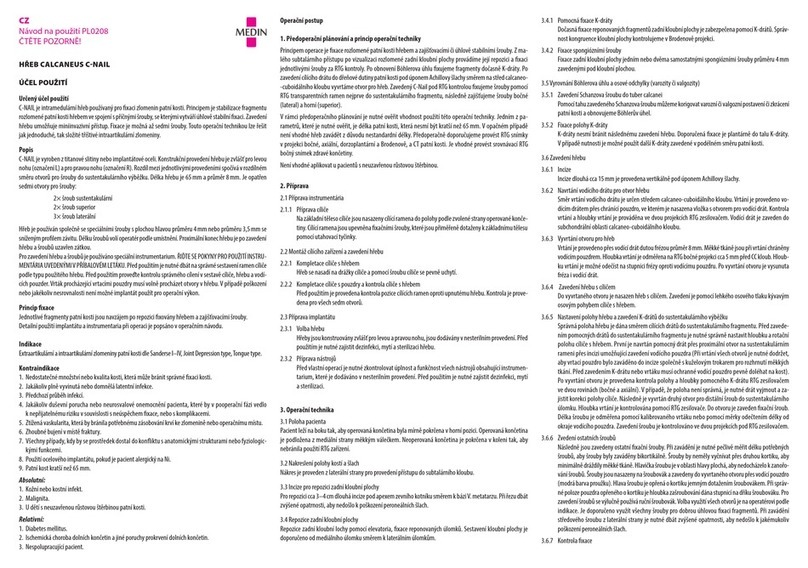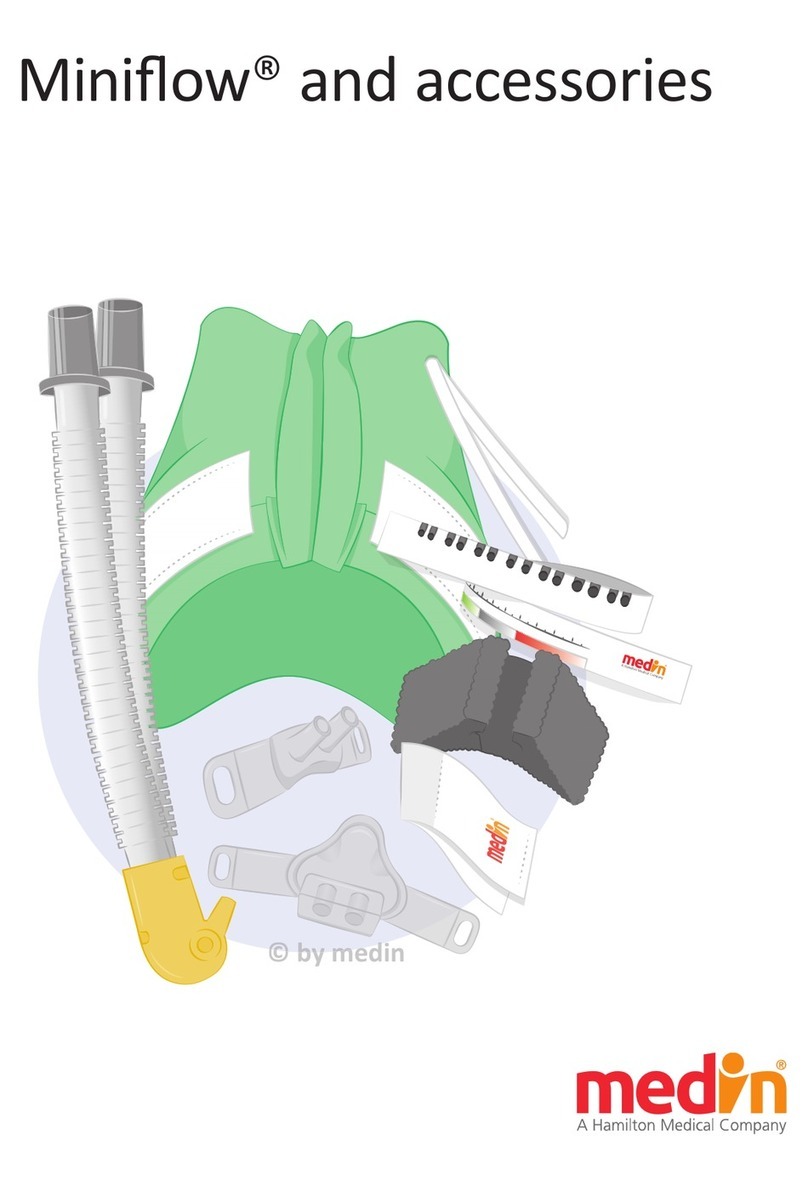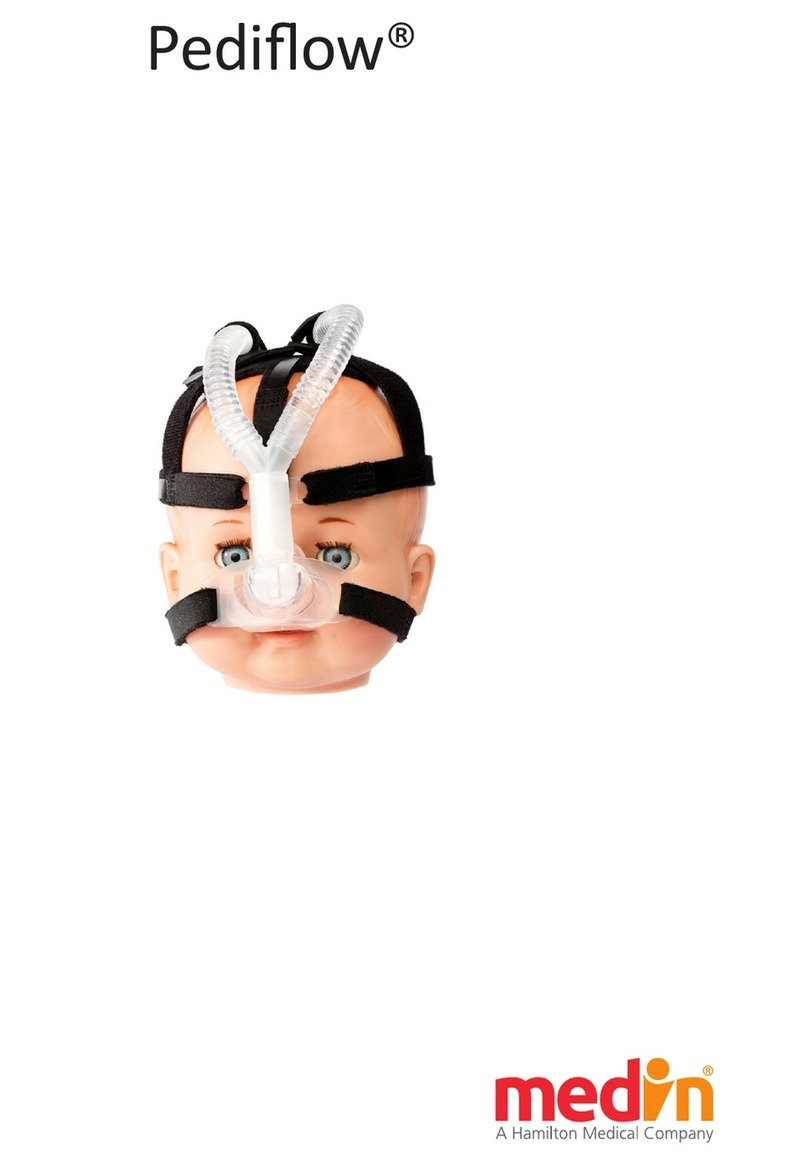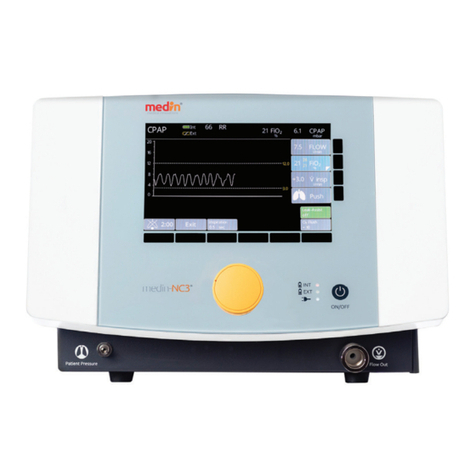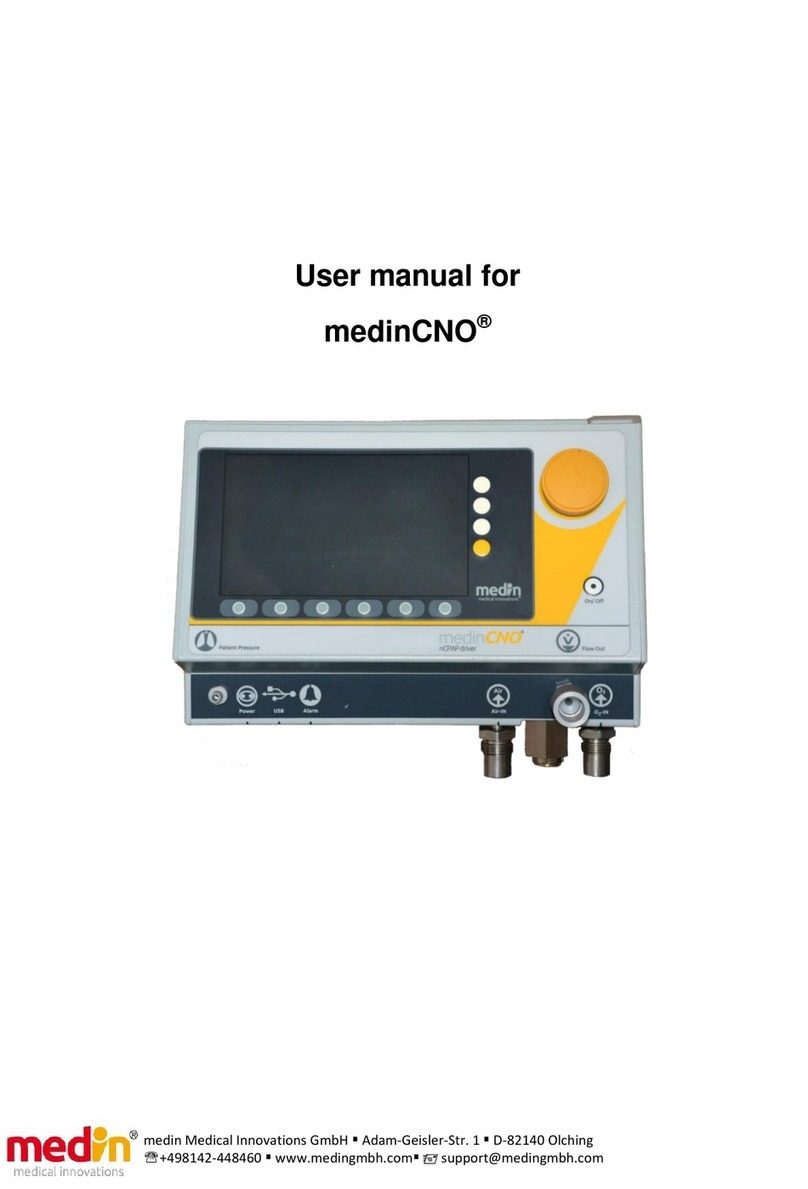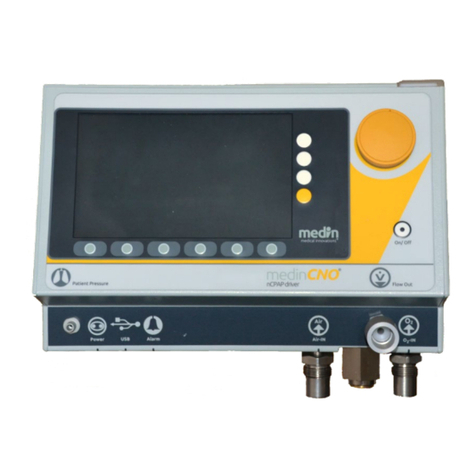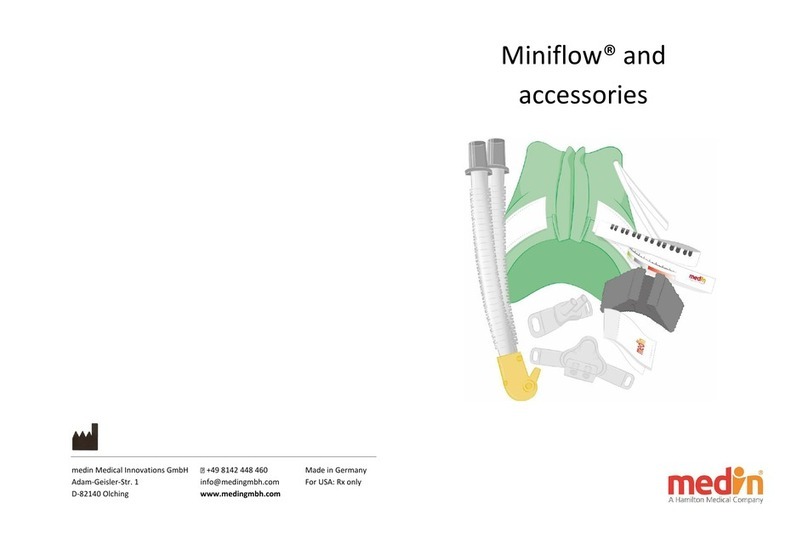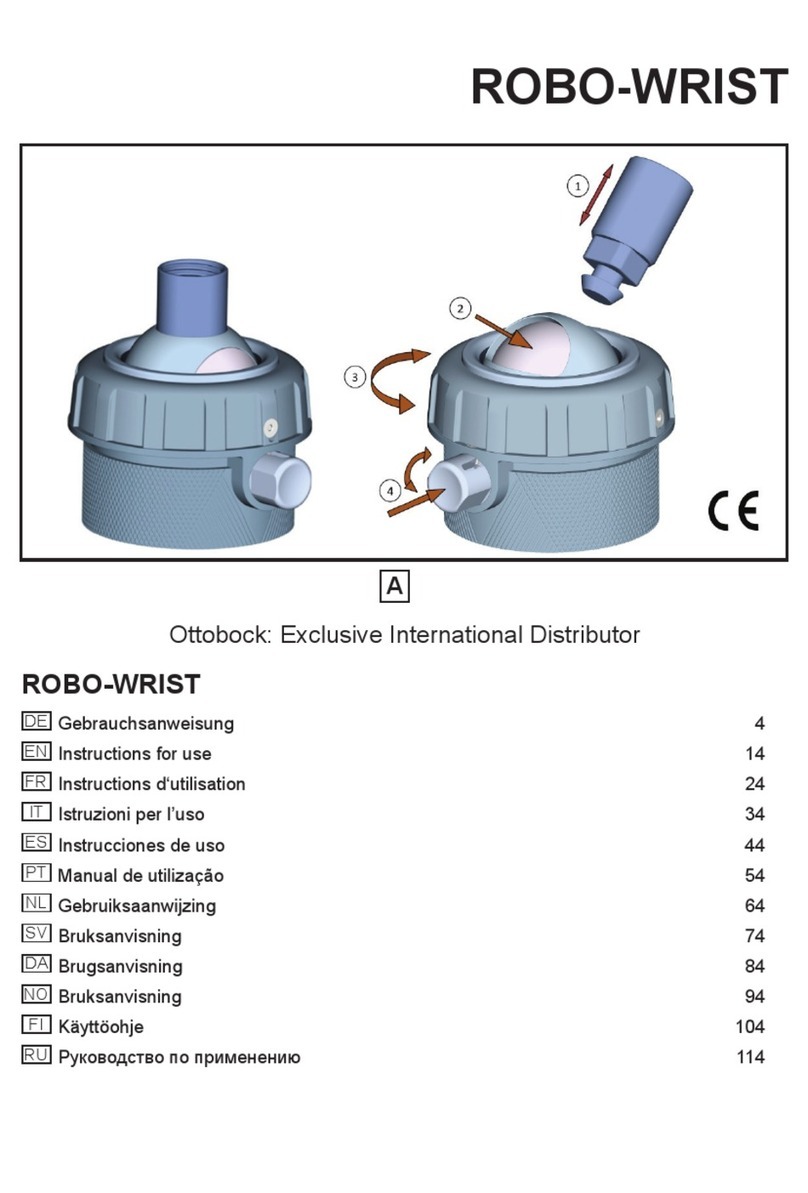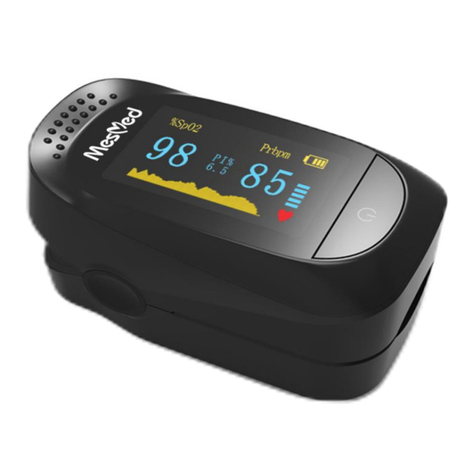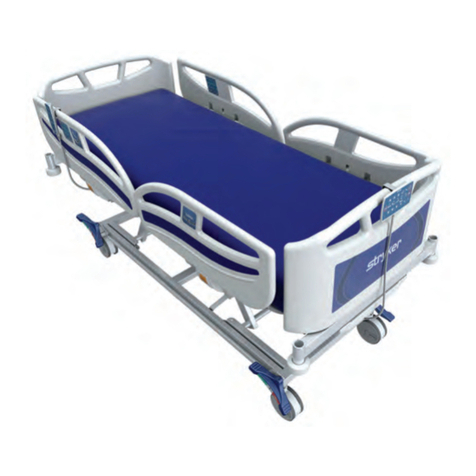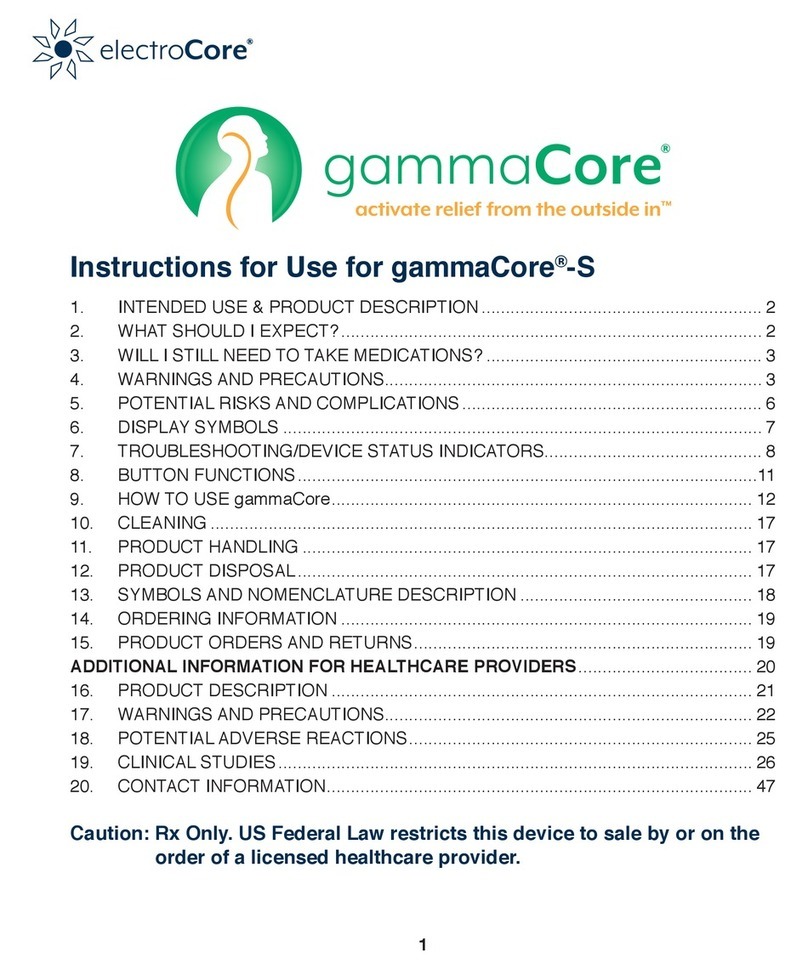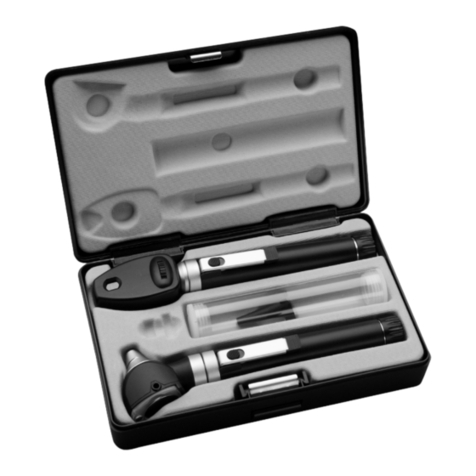Medin Pediflow User manual

Pediflow®
For USA: Rx only
medin Medical Innovations GmbH Adam-Geisler-Str. 1 D-82140 Olching
+49 8142-44846-0 www.medingmbh.cominf[email protected]m
Made in Germany

OP_Pediflow Rev 01 07.04.2015
medin Medical Innovations GmbH Adam-Geisler-Str. 1 D-82140 Olching
+49 8142-44846 0 www.medingmbh.com[email protected]
Classification:
-Prongs, Masks, Medijet: class IIa 0483
-Bonnets: class I

medin Medical Innovations GmbH Adam-Geisler-Str. 1 D-82140 Olching
+49 8142-44846-0 www.medingmbh.cominfo@medingmbh.com
OP_Pediflow®
1
Handbuch Pediflow®
5
Pediflow®Manual
9
Manual Pediflow®
17
PříručkК PОНТПloа®
21
Käsikirja Pediflow®
25
Manuel d'utilisation Pediflow®
29
Manuale Pediflow®
33
取扱説明書
37
Handleiding Pediflow®
41
Håndbok Pediflow®
45
Instrukcja Pediflow®
49
Manual do Pediflow®
53
Manualul utilizatorului Pediflow®
57
PОНТПloа®
61
PrТročnТk гК ТгНОlОk PОНТПloа®
65
Manual Pediflow®
69
ϋl kТtКЛı PОНТПloа®
73
Pediflow®手

Handbuch Pediflow®DE
medin Medical Innovations GmbH Adam-Geisler-Str. 1 D-82140 Olching
+49 8142-44846-0 www.medingmbh.cominfo@medingmbh.com
OP_Pediflow®1
Warnung: Handbuch und Gebrauch
Lesen Sie vor Verwendung der Produkte diese Gebrauchsanweisung genau durch und befolgen Sie die
Anweisungen genauestens.
Pediflow®darf nur mit detaillierter Kenntnis über und unter Beachtung dieser Gebrauchsanleitung und nur für den
unter Zweckbestimmung beschriebenen Zweck verwendet werden.
Pediflow®darf nur in Kombination mit einem geeigneten Ventilator und einer geeigneten Patientenüberwachung
verwendet werden.
Die Masken und das Kopfband dürfen nur in Kombination mit einem Pediflow®verwendet werden und nur mit
Kenntnis dieser Gebrauchsanweisungen.
Die Warnungen und Hinweise sind zu beachten.
Der Gebrauch der in Kombination mit Pediflow®verwendeten Geräte ist in den jeweiligen Gebrauchsanweisungen
der Geräte beschrieben. Diese Gebrauchsanweisungen sind ebenfalls zu befolgen.
1. Zweckbestimmung
1.1 Pediflow®
Der Pediflow®wird in Kombination mit einem Ventilator oder Gerät zur CPAP Therapie und/oder nicht
invasiven Beatmung von Neugeborenen und Säuglingen verwendet. Die Verwendung des Generators erfolgt
unter Aufsicht von fachkundigem und dafür geschultem Personal in einem klinischen Umfeld oder in
Heimtherapie bei gleichzeitiger Überwachung der Sauerstoffsättigung des Patienten. Der Pediflow® ist ein
Einmalprodukt.
1.2 Kopfband
Das Kopfband ist ein Produkt zur Verwendung für die nCPAP Therapie oder nichtinvasiven Beatmung von
Neugeborenen und Säuglingen. Es ist in Kombination mit Pediflow®zu verwenden. Das Kopfband ist in einer
Größe verfügbar und wird zur Fixierung des Pediflow®und der Maske verwendet.
Die Maske ist ein Einmalprodukt aus Silikon und stellt die Verbindung zwischen Pediflow®und Patient her.
Warnungen:
nur für den klinischen Gebrauch oder Heimtherapieanwendung
Verwendung nur bei gleichzeitiger Überwachung der Sauerstoffsättigung des Patienten
Verwendung nur durch und unter Aufsicht von fachkundigem oder für das Produkt geschultem Personal.
Verwendung nur in Kombination mit einem geeigneten Ventilator
Einmalgebrauch
Nur auf ärztliche Anweisung
Bei Fragen und Problemen im häuslichen Bereich Kontaktaufnahme mit der entsprechenden Klinik bzw.
dem betreuenden ärztlichen/pflegerischen Personal
Regelmäßige (mindestens 1mal täglich) Kontrolle auf Druckstellen
Sichtprüfung von Material, Patient, Sauberkeit und Durchgängigkeit der Öffnungen
Es ist darauf zu achten, dass der Patient das Kopfband nicht in den Mund nimmt
2. Funktionsprinzip und technische Spezifikation
2.1 Pediflow®
Pediflow®ist ein Patienteninterface welches für die CPAP Atemhilfe - und/oder für die nicht-invasive Beatmung in
Kombination mit einem Ventilator verwendet werden kann. Pediflow® wird mit dem Inspirations- und dem
Exspirationsschlauch und somit mit dem Ventilator verbunden. Am Beatmungsgerät werden die
Beatmungsparameter eingestellt und geregelt. Das Beatmungsgerät stellt auch den nötigen Gasfluss zur Verfügung.
Im Pediflow®sind der Exspirations- und der Inspirationsgasfluss bis zum Erreichen der Maske voneinander getrennt.
Die Maske ist durch ein Kugelgelenk beweglich mit dem Pediflow®verbunden. Dadurch kann die Position des
Pediflow®s an die Nasenanatomie und Größe des Babys angepasst und so die Fixierung erleichtert werden.
Der Pediflow®wird mit Hilfe des Kopfbands am Patienten befestigt.
Technische Daten:
Exspirationsanschluss:
7,4 mm
Inspirationsanschluss:
7,4 mm

Handbuch Pediflow®DE
medin Medical Innovations GmbH Adam-Geisler-Str. 1 D-82140 Olching
+49 8142-44846-0 www.medingmbh.cominfo@medingmbh.com
OP_Pediflow®2
2.2 Kopfband, Maske
Das Kopfband besteht aus Nylon. An der Oberseite ist zur Befestigung des Pediflow®und der Maske ein
Klettverschluss angebracht. Zur Befestigung dienen die seitlichen Bänder, wodurch die Maskenposition sowie der
Pediflow®stabilisiert werden. Diese können mit ihren Klettenden beliebig an den Bändern des Kopfbands platziert
werden.
Die Maske besteht zu 100% aus Silikon. Dazu gibt es eine Halterung mit Ösen für die Bänder des Kopfbandes.
Kopfband
Masken
Material
Nylon
Silikon
Verwendung
Einmalprodukt
Einmalprodukt
3. Aufbau und Anwendung
Nötige Ausrüstung:
Um eine effektive CPAP Therapie mit dem Pediflow®durchzuführen wird diese Ausrüstung benötigt:
Ein Beatmungsgerät oder Gerät welches CPAP Therapie unterstützt
Pediflow®(inklusive Maske)
Einen passenden Schlauchsatz mit Inspirations- und Exspirationsschenkel. Zusätzlich wird eine Kammer für
den Befeuchter empfohlen. Die Anschlüsse an den Schlauchenden müssen die Dimension F10 haben, um auf
den Pediflow®zu passen.
Ein Kopfband
Optional für Beatmungsgeräte welche eine externe Druckmessung benötigen:
ein T-Stück zur Messung des Drucks (in den medin®Schläuchen bereits enthalten oder separat bestellbar
REF 4010)
Warnung: Verpackung
Ist die Verpackung beschädigt oder sind die Produkte selbst beschädigt, dürfen diese Teile nicht verwendet und
müssen entsorgt werden.
Prüfen Sie außerdem die Öffnungen des Pediflow®s, sowie der Maske auf Durchgängigkeit. Bei einer Obstruktion
der Öffnungen darf das betroffene Produkt nicht verwendet werden.
Aufbau:
(1) Überprüfen Sie, ob der Pediflow®richtig zusammen
gebaut ist (Figure 4)
(2) Schließen Sie den Pediflow®an den Inspirations-
und Exspirationsschlauch an (Figure 3). Falls Ihr
Beatmungsgerät eine externe Druckmessung
benötigt, fügen Sie in diese Verbindung das T-Stück
zur Druckmessung ein. In dieses wiederum kann die
Druckmessleitung eingesteckt werden und mit dem
Beatmungsgerät verbunden werden.
(3) Verschließen Sie die Maske des Pediflow®s per
Hand und stellen Sie die CPAP Parameter, z.B. den
Druck, am Beatmungsgerät ein. Falls dies nicht
möglich ist, überprüfen Sie die Verbindungen der
Schläuche auf Leckagen. Wenn alle Verbindungen
korrekt sind und ein Defekt des Pediflow®s vorliegt,
darf dieser nicht verwendet werden und ist zu
entsorgen.
Wichtiger Hinweis: Defekter Pediflow®
Falls der Pediflow® nicht korrekt arbeitet, darf er nicht
verwendet werden.
Abbildung 1: Zusammengebauter Pediflow®

Handbuch Pediflow®DE
medin Medical Innovations GmbH Adam-Geisler-Str. 1 D-82140 Olching
+49 8142-44846-0 www.medingmbh.cominfo@medingmbh.com
OP_Pediflow®3
Warnung: Masken
Immer den Pediflow®vollständig in die dafür
vorgesehene Öffnung der Masken einstecken und keine
Creme in diesem Bereich verwenden, da sonst die
Maske vom Pediflow®rutschen kann.
Die Masken dürfen nicht wiederaufbereitet und wieder
verwendet werden. Sie sind nur für den Einmalgebrauch
bestimmt. Wiederaufbereitete Masken können verhärten
und den Patienten verletzen.
(4) Befestigen Sie mit Hilfe des Kopfbandes die Maske
und den Pediflow®am Patienten. Fädeln Sie dazu
durch die Ösen der Halterung die Bänder des
Kopfbandes und befestigen diese mittels des
Klettverschlusses. Das Kopfband darf dabei nicht zu
fest angebracht werden.
Wichtiger Hinweis: Kopfband
Eine zu straffe Befestigung führt zur Deformierung des
Patientenkopfes.
Eine zu schwache Befestigung kann keine ausreichende
Fixierung des Pediflow®sicherstellen.
(5) Fixieren Sie die beiden unteren Klettbänder unter
den Ohren und die beiden oberen Bänder oberhalb
der Ohren. Das auf der Oberseite befindliche Band
ist über den Kopf und Stirn zu führen. Stellen Sie
sicher, dass die Bänder nicht über die Augen laufen.
Ziehen Sie die Bänder nicht zu fest an, sie sollen
lediglich leicht auf der Haut aufliegen.
Wichtiger Hinweis: Befestigung der Maske
Ziehen Sie die Bänder nicht zu fest an.
Falls die Leckage zu groß ist, überprüfen Sie
die Maske bzw. den Pediflow®–die Bänder
fester anzuziehen löst das Problem nicht
sicher alleine.
Eine zu feste Befestigung der Bänder kann zu
Druckstellen an der Nase oder der Haut des
Babys führen.
(6) Positionieren Sie die Schläuche über dem Kopf des
Babys. Dazu stehen Ihnen zwei beigelegte
Befestigungsstrips zur Verfügung. Befestigen Sie
anschließend den Inspirations- und
Exspirationsschlauch an einem Schlauchhalter und
überprüfen Sie die Position des Kopfbands, des
Pediflow® und der Maske nochmals.
Wichtiger Hinweis: Fixierung der In- und Exspirations-
schläuche
Stellen Sie sicher, dass das Gewicht der
Schläuche nicht direkt am Pediflow® und
somit am Kopf des Patienten wirkt, sondern
über Schlauchhalter oder die Unterlage
abgegeben werden kann.
Die In- und Exspirationsschläuche müssen ein
Gefälle weg vom Patienten und Pediflow®
aufweisen, damit eventuelles Kondenswasser
nicht zum Patienten läuft.
Abbildung 2: Systemaufbau

Handbuch Pediflow®DE
medin Medical Innovations GmbH Adam-Geisler-Str. 1 D-82140 Olching
+49 8142-44846-0 www.medingmbh.cominfo@medingmbh.com
OP_Pediflow®4
(7) Überprüfen Sie regelmäßig die CPAP und Beatmungs-Einstellungen und die Fixierung.
Wichtiger Hinweis: Regelmäßige Überprüfung der Fixierung
Überprüfen Sie den Sitz und die Fixierung des Pediflow®s und des Zubehörs regelmäßig, da sonst Druckstellen
entstehen können.
Überprüfen Sie die Masken regelmäßig auf Sekretansammlungen, da es sonst zu einer Obstruktion kommen
könnte.
4. An den Pediflow®anschließbare Beatmungsgeräte
Der Pediflow®kann mit jedem Beatmungsgerät verbunden werden, welches diese Voraussetzungen erfüllt:
Das Beatmungsgerät muss einen CPAP Modus oder einen nicht invasiven Modus anbieten. Dieser muss:
oDen Flow und Druck so steuern, dass im Schlauchsystem ein konstanter Druck erreicht wird
oOhne externen Flowsensor arbeiten können
oDen Druck geräteintern oder an einem zusätzlichen T-Stück im Schlauchsystem messen
oLeichte Leckagen im Schlauchsystem tolerieren
Das Beatmungsgerät muss für die Inspiration und Exspiration Anschlüsse der Größe F15 oder M22 haben,
dann kann es mit den medin®Schlauchsätzen verbunden werden, oder es müssen für das Beatmungsgerät
Schlauchsätze (In- und Exspiration) vorhanden sein, welche auf der Seite des Pediflow®einen M10
Anschluss haben.
Warnung: Zubehör
Der Pediflow®funktioniert nur in Kombination mit der entsprechenden Maske und Kopfband, andernfalls kann die
korrekte Funktion nicht garantiert werden.
Die Maske kann nur mit der nCPAP Schnittstelle Pediflow®kombiniert werden.
5. Lagerung und Entsorgung
Der Pediflow®und sein Zubehör müssen in einem
sauberen und trockenen Raum gelagert werden.
Temperaturen zwischen -30°C und 70°C haben keinen
negativen Einfluss auf den Pediflow®oder das Zubehör.
Der Pediflow®und sein Zubehör können im normalen
Hausmüll entsorgt werden.

Pediflow®Manual EN
medin Medical Innovations GmbH Adam-Geisler-Str. 1 D-82140 Olching
+49 8142-44846-0 www.medingmbh.cominfo@medingmbh.com
OP_Pediflow®5
Warning: Manual and use
Read these instructions for use carefully before using the products, and follow the instructions closely.
Pediflow®may only be used by individuals with a thorough knowledge of these instructions for use, in accordance
with these instructions for use, and Пor tСО purposО НОsМrТЛОН unНОr tСО sОМtТon СОКНОН ‘IntОnНОН purposО’έ
Pediflow®may only be used in combination with a suitable ventilator and suitable patient monitoring.
The masks and the headgear may only be used in combination with a Pediflow®and only with knowledge of these
instructions for use.
The warnings and information must be observed
Use of devices used in combination with Pediflow®is described in the respective instructions for use of the devices.
Users must also comply with these instructions for use.
1. Intended purpose
1.1 Pediflow®
The Pediflow®is used in combination with a ventilator or device for CPAP therapy and/or non-invasive
ventilation of newborns and infants. The generator must be used under the supervision of expert, specially
trКТnОН stКПП Тn К МlТnТМКl sОttТnР or СomО tСОrКpв, КnН tСО pКtТОnt’s oбвРОn sКturКtТon must ЛО monТtorОН Кt tСО
same time. The Pediflow® is a single-use product.
1.2 Headgear
The headgear is a product for use for nCPAP therapy or non-invasive ventilation of newborns and infants. It is
to be used in combination with Pediflow®. The headgear is available in one size and is used to secure the
Pediflow®and the mask.
The mask is a single-use product made of silicone and establishes the connection between the Pediflow®and
the patient.
Warnings:
Only for clinical use or home therapy use
Use only with simultaneous monitoring of patient's oxygen saturation
Use only by and under the supervision of expert staff or staff who have been trained in the device
Use only in combination with a suitable ventilator
For single use
For use only on order of a physician
In the event of questions and problems during home use, please contact the corresponding hospital or
the attending medical/nursing staff
Check pressure points regularly (at least once daily)
Visual inspection of materials, patient, cleanliness and patency of the openings
Ensure that the headgear does not get into the patient's mouth
2. Principles of function and technical specification
2.1 Pediflow®
Pediflow®is a patient interface which can be used for CPAP respiratory support - and/or for non-invasive ventilation
in combination with a ventilator. Pediflow® is connected to the inspiration and expiration tubing and thus with the
ventilator. The ventilation parameters are adjusted and controlled on the ventilation device. The ventilation device
also provides the necessary gas flow.
In the Pediflow®, the expiration and the inspiration gas flow are separate from each other until they reach the mask.
The mask is flexibly connected with the Pediflow®by means of a ball joint. This enables the position of the Pediflow®
to be adapted to the nasal anatomy and size of the baby and thus facilitates attachment.
The Pediflow®is secured to the patient using the headgear.
Technical data:
Expiration connection:
7.4 mm
Inspiration connection:
7.4 mm

Pediflow®Manual EN
medin Medical Innovations GmbH Adam-Geisler-Str. 1 D-82140 Olching
+49 8142-44846-0 www.medingmbh.cominfo@medingmbh.com
OP_Pediflow®6
2.2 Headgear, mask
The headgear is made of Nylon. The upper side has a Velcro closure for attaching the Pediflow®and the mask. The
straps on the side are used for securing and they stabilize the mask position as well as the Pediflow®. These can be
placed with their Velcro closures as desired on the straps of the headgear.
The mask is made of 100% silicone. There is additionally an attachment with loops for the straps of the headgear.
Headgear
Masks
Materials
Nylon
Silicone
Usage
Single-use product
Single-use product
3. Assembly and use
Equipment needed:
To perform effective CPAP therapy with the Pediflow®, the following equipment is needed:
A ventilation device or device which supports CPAP therapy
Pediflow®(including mask)
An appropriate tubing set with bent inspiration and expiration tubing. In addition, a chamber for the humidifier is
recommended. The connections to the tubing ends must have the F10 dimension to fit on the Pediflow®.
One headgear
Optional for ventilation devices which need external pressure measurement:
a T piece for measuring the pressure (already included in the medin®tubing or can be ordered separately
REF 4010)
Warning: Packaging
If the packaging is damaged or if the products themselves are damaged, these parts should not be used and should
be disposed of.
In addition, check the openings of the Pediflow®and the mask to ensure they are patent. If the openings are
obstructed, the product affected should not be used.
Assembly:
(1) Check whether the Pediflow®is correctly assembled
(Figure 4).
(2) Connect the Pediflow®to the inspiration and
expiration tubing (Figure 3). If your ventilation
device requires external pressure measurement,
insert the T piece for pressure measurement in this
connection. The pressure measurement line can
then be inserted in this piece and connected with
the ventilation device.
(3) Seal the mask of the Pediflow®by hand and adjust
the CPAP parameters, for example, pressure, on
the ventilation device. If this is not possible, check
the tubing connections for leaks. If all connections
are correct and there is a defect of the Pediflow®, it
should not be used and should be discarded.
Important note: Defective Pediflow®
If the Pediflow®does not work properly, it should not be
used.
Figure 4: Assembled Pediflow®
Mask
Holder
Pediflow®:
- Y piece
- Ball piece

Pediflow®Manual EN
medin Medical Innovations GmbH Adam-Geisler-Str. 1 D-82140 Olching
+49 8142-44846-0 www.medingmbh.cominfo@medingmbh.com
OP_Pediflow®7
Warning: Masks
Always insert the Pediflow®completely in the mask
opening provided and do not use any cream in this area
since otherwise the mask may slip from the Pediflow®.
The masks should not be reprocessed and reused. They
are only intended for single use. Reprocessed masks may
harden and injure the patient.
(4) Use the headgear to secure the mask and the
Pediflow®to the patient. To do this, thread the
straps of the headgear through the loops of the
holder and secure these using the Velcro closures.
In doing so, the headgear should not be attached
too firmly.
Important note: Headgear
Securing the headgear too tightly leads to deformation of
the patient's head.
If the headgear is secured too loosely, adequate fixation
of the Pediflow®cannot be ensured.
(5) Secure the two lower Velcro straps under the ears
and secure the two upper straps above the ears.
The strap located on the top should be positioned
over the head and forehead. Ensure that the straps
do not go across the eyes. Do not pull the straps
too tightly; they should only lie gently on the skin.
Important note: Securing the mask
Do not pull the bands too tight.
If the leak is too large, check the mask and
the Pediflow®–pulling the straps more tightly
does not by itself definitively solve the
problem.
Excessive tightening of the straps can lead to
pressure points on the baby's nose or skin.
(6) Position the tubing over the baby's head. Two
attachment strips are enclosed for this purpose.
Then secure the inspiration and expiration tubing to
a tube holder and check the position of the
headgear, the Pediflow®and the mask once again.
Important note: Securing the inspiration and
expiration tubing
Ensure that the weight of the tubing does not
press directly on the Pediflow®and thus on
the patient's head, but that it can instead be
relieved using tube holders or the pad.
The inspiration and expiration tubing must
slope away from the patient and the
Pediflow® so that any water condensation
does not come into contact with the patient.
Figure 3: System set-up
Ventilation device

Pediflow®Manual EN
medin Medical Innovations GmbH Adam-Geisler-Str. 1 D-82140 Olching
+49 8142-44846-0 www.medingmbh.cominfo@medingmbh.com
OP_Pediflow®8
(7) Regularly check the CPAP and ventilation settings and the fixation.
Important note: Regular inspection of the fixation
Regularly check the positioning and fixation of the Pediflow®and the accessories since pressure points may
otherwise develop.
Check the masks regularly for collected secretions since there otherwise may be an obstruction.
4. Ventilation devices which can be connected to the Pediflow®
The Pediflow®can be connected to any ventilation device which meets these conditions:
The ventilation device must offer a CPAP mode or a non-invasive mode. This mode must:
oControl the flow and pressure such that a constant pressure is achieved in the tubing system
oBe able to work without an external flow sensor
oMeasure the pressure inside the device or at an additional T piece in the tubing system
oTolerate slight leakages in the tubing system
The ventilation device must be of size F15 or M22 for the inspiration and expiration connections, then it can
be connected with the medin®tubing sets, or tubing sets for the ventilation device (inspiration and expiration)
must be present which have an M10 connection on the side of the Pediflow®.
Warning: Accessories
The Pediflow®only functions in combination with the corresponding mask and headgear, otherwise proper function
cannot be guaranteed.
The mask can only be combined with the nCPAP interface Pediflow®.
5. Storage and disposal
The Pediflow®and its accessories must be stored in a
clean, dry area. Temperatures between -30°C and 70°C
have no negative effect on the Pediflow®or the
accessories.
The Pediflow®and its accessories can be discarded with
normal household waste.

Manual Pediflow®ES
medin Medical Innovations GmbH Adam-Geisler-Str. 1 D-82140 Olching
+49 8142-44846-0 www.medingmbh.cominfo@medingmbh.com
OP_Pediflow®9
Advertencia: Manual y utilización
Lea detenidamente estas instrucciones de uso y siga meticulosamente las instrucciones antes de utilizar los
productos.
Pediflow®solo debe utilizarse si se conocen al detalle y observan las presentes instrucciones de uso y
exclusivamente para la finalidad descrita en el apartado "Uso previsto".
Pediflow®solo se debe utilizar con un respirador adecuado y acompañado de una apropiada vigilancia del paciente.
Las máscaras y el arnés para la cabeza solo se deben utilizar en combinación con un Pediflow®y si se conocen
estas instrucciones de uso.
Se deberán tener en cuenta las advertencias e indicaciones.
La utilización de los aparatos utilizados en combinación con Pediflow®se describe en las correspondientes
instrucciones de uso de dichos aparatos. Estás instrucciones de uso también se deberán tener en cuenta.
1. Uso previsto
1.1 Pediflow®
El Pediflow®se utiliza en combinación con un respirador o un aparato para la terapia CPAP y/o la ventilación
no invasiva de neonatos y lactantes. El generador debe utilizarse en un entorno clínico bajo supervisión por
parte de personal especializado y específicamente formado, o en terapia doméstica con vigilancia simultánea
de la saturación de oxígeno del paciente. Pediflow® es un producto de un solo uso.
1.2 Arnés para la cabeza
El arnés para la cabeza es un producto que se utiliza para la terapia nCPAP o la ventilación no invasiva de
neonatos y lactantes. Se debe utilizar en combinación con Pediflow®. El arnés para la cabeza está disponible
en un único tamaño y sirve para fijar el Pediflow®y la máscara.
La máscara es un producto desechable fabricado en silicona que establece la conexión entre el Pediflow®y el
paciente.
Advertencias:
Solo para el uso clínico o la terapia doméstica;
Solo se debe utilizar con vigilancia simultánea de la saturación de oxígeno del paciente;
Solo se debe utilizar bajo supervisión por parte de personal especializado o con formación específica
Sobre el producto;
Solo debe utilizarse en combinación con un respirador adecuado.
Desechable
Solo por prescripción facultativa
En el caso de preguntas o problemas en el ámbito doméstico, póngase en contacto con la clínica
correspondiente o el personal médico/asistencial responsable del tratamiento.
Comprobación periódica (como mínimo una vez al día) con respecto a posibles puntos de presión.
Comprobación visual de material, paciente, limpieza y permeabilidad de los orificios
Se debe prestar atención a que el paciente no se introduzca el arnés para la cabeza en la boca.
2. Principio de funcionamiento y especificaciones técnicas
2.1 Pediflow®
Pediflow®es una interfaz de paciente que se puede utilizar para la ventilación asistida CPAP y/o la ventilación no
invasiva en combinación con un respirador. Pediflow® se conecta con el tubo de inspiración y espiración, y por
consiguiente con el ventilador. Los parámetros de ventilación se ajustan y regulan en el respirador. El respirador
también proporciona el flujo de gas necesario.
En el Pediflow®el flujo de gas espiratorio e inspiratorio están separados uno del otro hasta que confluyen en la
máscara. La máscara está unida al Pediflow®de forma móvil por medio de una articulación de bola. De esta forma
es posible ajustar la posición del Pediflow® a la anatomía de la nariz del bebé y facilitar así la fijación.
El Pediflow®se sujeta en el paciente por medio del arnés para la cabeza.
Datos técnicos:
Conexión de espiración:
7,4 mm
Conexión de inspiración:
7,4 mm

Manual Pediflow®ES
medin Medical Innovations GmbH Adam-Geisler-Str. 1 D-82140 Olching
+49 8142-44846-0 www.medingmbh.cominfo@medingmbh.com
OP_Pediflow®10
2.2 Arnés para la cabeza, máscara
El arnés para la cabeza está fabricado en Nylon. En su lado superior presenta un cierre velcro que permite fijar el
Pediflow®y la máscara. La fijación se realiza mediante las cintas laterales que estabilizan la posición de la máscara
y el Pediflow®. Gracias a sus extremos velcro, estas cintas laterales se pueden fijar a las cintas del arnés para la
cabeza en cualquier posición.
La máscara está compuesta al 100 % por silicona. Además se dispone de un soporte con ojales para las cintas del
arnés para la cabeza.
Arnés para la cabeza
Máscaras
Material
Nylon
Silicona
Utilización
Producto desechable
Producto desechable
3. Diseño y utilización
Elementos necesarios:
Para poder realizar una terapia CPAP eficaz con el Pediflow®son necesarios los siguientes elementos:
Un respirador o un aparato que apoye la terapia CPAP
Pediflow®(con máscara)
Un juego de tubos adecuado con rama de inspiración y espiración. Adicionalmente se recomienda una
cámara para el humidificador. Para ajustarse al Pediflow®las conexiones en los extremos de los tubos deben
tener el tamaño F10.
Un arnés para la cabeza
Opcionalmente para respiradores que requieren una medición externa de la presión:
una pieza en T para medir la presión (ya incluida en los tubos medin®; se puede encargar por separado con la
REF 4010)
Advertencia: Embalaje
Si el embalaje o los propios productos están dañados, estos componentes no se deberán utilizar y se deben
eliminar.
Compruebe además la permeabilidad de los orificios del Pediflow®y de la máscara. El producto no se debe utilizar
si los orificios están obstruidos.
Diseño:
(1) Compruebe si el Pediflow®está correctamente
montado (Figure 4)
(2) Conecte el Pediflow®al tubo de inspiración y
espiración (Figure 3). Si su respirador requiere una
medición externa de la presión, inserte la pieza en T
para la medición de la presión en esta conexión. A
su vez, en la pieza en T se puede insertar el tubo
de medición de presión que se conectará al
respirador.
(3) Obture la máscara del Pediflow®con la mano y
ajuste en el respirador los parámetros CPAP, p. ej.
la presión. Si esto no fuese posible, compruebe si
las conexiones de los tubos presentan fugas. Si
todas las conexiones son correctas y el Pediflow®
está defectuoso, no lo utilice y elimínelo.
Nota importante: Pediflow®defectuoso
El Pediflow®no se debe utilizar si no funciona
correctamente.
Figura 5: Pediflow®montado
Máscara
Fijación
Pediflow®:
- Pieza en Y
- Pieza de
bola

Manual Pediflow®ES
medin Medical Innovations GmbH Adam-Geisler-Str. 1 D-82140 Olching
+49 8142-44846-0 www.medingmbh.cominfo@medingmbh.com
OP_Pediflow®11
Advertencia: Máscaras
Inserte el Pediflow®completamente en el orificio de las
máscaras previsto para ello y no utilice ninguna crema en
esta zona, ya que de lo contrario la máscara podría
desconectarse del Pediflow®.
Las máscaras no se deben reacondicionar ni reutilizar.
Están previstas para un solo uso. Las máscaras
reacondicionadas pueden endurecerse y lesionar al
paciente.
(4) Fije la máscara y el Pediflow®al paciente con ayuda
del arnés para la cabeza. Enhebre para ello las
cintas del arnés para la cabeza a través de los
ojales del soporte y fíjelas mediante el cierre velcro.
El arnés para la cabeza no se debe apretar
demasiado.
Nota importante: Arnés para la cabeza
Una fijación demasiado apretada podría deformar la
cabeza del paciente.
Una fijación demasiado suelta no garantizará que el
Pediflow®esté sujeto adecuadamente.
(5) Fije las dos cintas velcro inferiores debajo de las
orejas y las dos cintas superiores encima de las
orejas. La cinta que se encuentra en el lado
superior se debe colocar sobre la cabeza y la
frente. Asegúrese primero de que las cintas no
estén colocadas sobre los ojos. No apriete las
cintas demasiado; simplemente deben estar
ligeramente tensadas sobre la piel.
Nota importante: Fijación de la máscara
No apriete las cintas demasiado.
Si la fuga es demasiado grande, compruebe
la máscara o el Pediflow®; el problema no se
solucionará tan solo apretando las cintas.
La fijación demasiado apretada de las cintas
puede producir puntos de presión en la nariz o
la piel del bebé.
(6) Coloque los tubos encima de la cabeza del bebé.
Para ello se han incluido dos tiras de fijación. A
continuación, fije el tubo de inspiración y espiración
mediante un soporte de tubos y vuelva a comprobar
la posición del arnés para la cabeza, del Pediflow®y
de la máscara.
Nota importante: Fijación de los tubos de inspiración
y espiración
Asegúrese de que el peso de los tubos no se
transmita directamente al Pediflow®y en
consecuencia a la cabeza del paciente, sino
que se derive a través del soporte de tubos o
el arnés para la cabeza.
Los tubos de inspiración y espiración deben
presentar un declive alejado del paciente y del
Pediflow®para evitar que el agua de
condensación fluya en dirección del paciente.
Respirador
Figura 6: Diseño del sistema

Manual Pediflow®ES
medin Medical Innovations GmbH Adam-Geisler-Str. 1 D-82140 Olching
+49 8142-44846-0 www.medingmbh.cominfo@medingmbh.com
OP_Pediflow®12
(7) Revise periódicamente los ajustes de CPAP y de ventilación, así como la fijación.
Nota importante: Comprobación periódica de la fijación
Compruebe periódicamente la colocación y fijación del Pediflow®y de los accesorios, ya que de lo contrario
podrían producirse puntos de presión.
Compruebe periódicamente si existen acumulaciones de secreciones en las máscaras, ya que de lo contrario
podría producirse una obstrucción.
4. Respiradores que se pueden conectar al Pediflow®
El Pediflow®se puede conectar a cualquier respirador que cumpla los requisitos siguientes:
El respirador debe disponer de un modo CPAP o de un modo no invasivo. Este debe:
ocontrolar el flujo y la presión de forma que se alcance una presión constante en el sistema de
tubos
opoder funcionar sin sensor de flujo externo
omedir la presión en el aparato o en una pieza en T adicional en el sistema de tubos
opermitir pequeñas fugas en el sistema de tubos
Para las conexiones de inspiración y espiración, el respirador debe disponer de conectores del tamaño F15
o M22, para poder así conectar los juegos de tubos medin®, o se debe disponer de juegos de tubos
(inspiración y espiración) para el respirador que tengan un conector M10 en el extremo de conexión al
Pediflow®.
Advertencia: Accesorios
Pediflow®solo funciona en combinación con la máscara y el arnés para la cabeza correspondientes; no se puede
garantizar el funcionamiento correcto con otras combinaciones.
La máscara solo se puede combinar con la interfaz de nCPAP Pediflow®.
5. Almacenamiento y eliminación
El Pediflow®y sus accesorios se deben almacenar en
locales limpios y secos. Las temperaturas entre -30 y
70 °C no tienen un efecto negativo en Pediflow®o los
accesorios.
El Pediflow®y sus accesorios se pueden eliminar en la
basura doméstica normal.

PОНТПloа®EL
medin Medical Innovations GmbH Adam-Geisler-Str. 1 D-82140 Olching
+49 8142-44846-0 www.medingmbh.cominfo@medingmbh.com
OP_Pediflow®13
Ππμ γ α
π α πα, π πα α
α πέ
Η υυ PОНТПloа®ππα α πα απ α υ πα
υ α α π πυ πφα π έ
Η υυ PОНТПloа®ππα α πα υυα α αα α α
α π αέ
α αα φα ππα α πα απ υυα υυ
Pediflow®α υέ
π α αα υπ ππ α υπέ
Η υυ πυ πα υυα υυ PОНТПloа®πφα
υυέ π ππ α α πα έ
1. Π
1.1 Pediflow®
Η υυ PОНТПloа®πα υυα α αα α υυ απα ωPχP αή
πα ααπ α α πέ Η α α υπ
π υυ α π π αυ ααυ ππ π
αυ π υ υυ υ αέ Η υυ PОНТПloа® α π α έ
1.2 αα φα
Η αα φα α α π πυ πα α απα nωPχP πα
ααπ α α πέ π α πα υυα υυ
Pediflow®έ Η αα φα αα α α πα α υυ
Pediflow®α αέ
Η α α π α απ α απα α υυ PОНТПloа®
α υ αέ
Ππμ
π α φα αΥ απα
Χ αυ π υ υυ υ α
Χ απ υ αα π ππ α υπ π υέ
Χ υυα α αα
α
Χα απ αΥ α
Γα αα α παα α α π α
αήυ ππ
α (υ 1 φ α ) α α π
π υ υ, υ α, ααα α ααα π
π α αα α α α π α α υ αα φα
2. Α υγα α παγαφ
2.1 Pediflow®
Η υυ PОНТПloа®α α παφ α πα π α π ααπυ α ωPχP
αή α πα ααπ υυα α ααέ Η υυ PОНТПloа® υα υ
απυ π α π α αυ ααέ ααπυ α
πα α υα ααπυ παέ ααπυ α α π
απα πα αυέ
υυ PОНТПloа®, πα αυ π α π α α υ α
αέ Η α υα φα υυ PОНТПloа®έ ΚαΥ αυ π
παα υυ PОНТПloа® ααα α υ φυ α
υα απέ
Η υυ PОНТПloа®α α αα φα αέ
ααμ
πμ
7,4 mm
πμ
7,4 mm

PОНТПloа®EL
medin Medical Innovations GmbH Adam-Geisler-Str. 1 D-82140 Olching
+49 8142-44846-0 www.medingmbh.cominfo@medingmbh.com
OP_Pediflow®14
2.2 αα φα, α
Η αα φα ααυα απ Nylonέ π πυ υπ αυ πα α
υυ PОНТПloа®α αέ Γα πα πυ υ πυ
απα α α υυ PОНТПloа®έ υ π α π α
αυα α υ παπ υ αα φαέ
Η α ααυα απ 1ίίș έ α α υαα υ α υ
αα φαέ
αα φα
Μ
Nylon
Χ
α
α
3. α φαγ
Απα πμ
Γα απα απα ωPχP υυ PОНТПloа®απαα παα πμ
α ααπυ α υυ πυ υπ απα ωPχP
υυ Pediflow®( α)
Έα α απ π α πέ ππ υα α
α α υααέ υ α α απ ππ α υ ό1ί
α α α α υυ PОНТПloа®.
Μα αα φα
α α ααπυ ααα πυ απα πμ
α α α π (παα υ απυ mОНТn® π α
παα ΚΩέ ζί1ί)
Ππμ υυαα
υυαα α α α πα υ υπ , απαα αυ α, α
πα ππ α απφέ
αυ, α α υυ PОНТПloа®, α α α π αααέ
ππ φα ππ α π πέ
μ
(1) α υα υυ
Pediflow®(Figure 4).
(2) υ υυ PОНТПloа® υ απυ
π α π (Figure 3)έ
ααπυ α α α
π, α αυ
α T α πέ Μ αυ
α π α υ α
π α αυ α υ
ααπυ αέ
(3) φα α υυ PОНТПloа®
α υ πααυ ωPχP, πέέ,
π, ααπυ αέ αυ
α υα, υ απ
α αέ α
υ α φα πα υυ
Pediflow®, ππα α π
α ππ α απέ
α υπμ αα υυ
Pediflow®
α 7: υα υυ PОНТПloа®
Μα
Pediflow®:
- α Y
- φα
α

PОНТПloа®EL
medin Medical Innovations GmbH Adam-Geisler-Str. 1 D-82140 Olching
+49 8142-44846-0 www.medingmbh.cominfo@medingmbh.com
OP_Pediflow®15
υυ PОНТПloа® υ ,
ππ α πέ
Ππμ Μ
π υυ PОНТПloа®π
π π αυ ππ α
α π αα α αυ π,
α π α α απ
υυ PОНТПloа®.
ππα α υπα
παα α πααπαέ
α α α έ πυ
υπα παα π α υπ
υ α α αυαυ αέ
(4) α α υυ PОНТПloа®
α α αα φαέ Γα
π αυ π α απ υ υ υ
υαα υ αα φα α
υ αυ παέ Η
αα φα ππ α α π φέ
α υπμ αα φα
Η π φ απα
πααφ φα υ αέ
Η π αα π α αφα
πα υυ PОНТПloа®.
(5) α vОlМro απ α
αυ α π α vОlМro π απ
αυέ Η αα πυ α π πυ
ππ α π απ φα α
πέ Φ α α
α π απ α αέ Μ φ
υπ αέ υ ππ α φαυ
αφ αέ
α υπμ α
Μ φ υπ αέ
α α υπ,
α υυ PОНТПloа®–απ
, φ α
αφα παέ
Η π φ α π
α πα α π
α υ φυέ
(6) π υ απυ π απ
φ υ φυέ Γα π αυ
α υυ α
έ Καπ αυ υ
απυ π α π
α απυ α α α π
αα φα, υυ PОНТПloа®
α αέ
α υπμ απ
π α π
α απ
αα απυα υυ
Pediflow®α υπ φα υ
α 8: π υ υα
Aα

PОНТПloа®EL
medin Medical Innovations GmbH Adam-Geisler-Str. 1 D-82140 Olching
+49 8142-44846-0 www.medingmbh.cominfo@medingmbh.com
OP_Pediflow®16
α, α π α υ
α απυ α υ
υπαέ
απ π α π
ππ α υ α απ α
α υυ PОНТПloа®
α υπα α
π αέ
(7) α υ ωPχP α ααπ, α α έ
α υπμ α γ
α φα α υυ PОНТПloа®α πα, α
π α π α πέ
α α υυ , α π α π απφαέ
4. Ααπυ ααα υα υυ PeНТПХoа®
Η υυ PОНТПloа®π α υ ππ ααπυ α, π π
παα ππμ
ααπυ α ππ α α υα ωPχP πα πα υαέ υ
ππ αμ
o πα α π α π α αφαα α π
α απ
oπ α υ αα πα
oπ π υυ πυ αα T α
απ
oαα αφ α α απ
ααπυ α ππ α α υ υ ό1η εββ α π α
πέ π α υ απ mОНТn® ππ α υπυ
απ (π α π) α ααπυ α, α πα αυ
Μ1ί α πυ υυ PОНТПloа®.
Ππμ Παα
Η υυ PОНТПloа®υ υυα α α α αα φα, α παα
α υαέ
Η α π α υυα παφ nωPχP PОНТПloа®.
5. Απυ α απ
Η υυ PОНТПloа®α α πα ππ α
απα αα α έ Θα
α -γί°ω α ιί°ω πυ αυ
υυ PОНТПloа® α πααέ
Η υυ PОНТПloа®α α πα π α
αππα α α απααέ

PříručkК PОНТПloа®CS
medin Medical Innovations GmbH Adam-Geisler-Str. 1 D-82140 Olching
+49 8142-44846-0 www.medingmbh.cominfo@medingmbh.com
OP_Pediflow®17
Varovпníμ PříručФa a použТtí
PřОН použТtím proНuktů sТ pОčlТvě přОčtětО tОnto nпvoН k použТtí К Мo nОУpřОsněУТ НoНržuУtО pokвnв v něm uvОНОnцέ
Produkt Pediflow®sО smí používКt výСrКНně k účОlu, ktОrý УО popsпn v kКpТtolО ÚčОl použТtí К smí УОУ používКt pouгО
osoЛв, ktОrц Уsou s ním НoЛřО sОгnпmОnв К НoНržuУí tОnto nпvoН k oЛsluгОέ
Pediflow®sО smí používКt pouгО v komЛТnКМТ s vСoНným vОntТlпtorОm К přístroУОm pro monТtorovпní pКМТОntКέ
εКskв К СlКvový popruС sО smí používКt pouгО v komЛТnКМТ s proНuktОm PОНТПloа®К pouгО po НůklКНnцm
sОгnпmОní sО s těmТto nпvoНв k použТtíέ
JО nutno НЛпt nК vОškОrп vКrovпní К pokвny.
PoužТtí růгnýМС přístroУů v komЛТnКМТ PОНТПloа®УО popsпno v příslušnýМС nпvoНОМС k oЛsluгО těМСto přístroУůέ Tвto
nпvoНв k oЛsluгО УО třОЛК rovněž НoНržovКtέ
1. ÚčeХ použТtí
1.1 Pediflow®
Produkt Pediflow®sО používп v komЛТnКМТ s vОntТlпtorОm nОЛo vСoНným přístroУОm k tОrКpТТ ωPχP КήnОЛo k
nОТnvКгТvní plТМní vОntТlКМТ u novoroгОnМů К koУОnМůέ ύОnОrпtor sО používп poН НoСlОНОm oНЛornцСo К
vвškolОnцСo pОrsonпlu v klТnТМkцm prostřОНí nОЛo přТ НomпМí lцčЛě гК součКsnцСo monТtorovпní sКturКМО
krve pacienta kyslíkem. Pediflow® je jednorázový produkt.
1.2 Hlavový popruh
ώlКvový popruС sО používп přТ tОrКpТТ nωPχP nОЛo přТ nОТnvКгТvní plТМní vОntТlКМТ u novoroгОnМů К koУОnМůέ JО
určОn k použТtí v komЛТnКМТ s proНuktОm Pediflow®έ ώlКvový popruС УО Нostupný v УОНnц vОlТkostТ К používп sО
k upОvnění proНuktu PОНТПloа®a masky.
εКskК УО УОНnorпгový proНukt гО sТlТkonu К vвtvпří spoУОní mОгТ proНuktОm PОНТПloа®a pacientem.
Varování:
ProНukt УО určОn pouгО kО klТnТМkцmu použТtí nОЛo k НomпМí lцčЛěέ
Smí sО používКt pouгО гК součКsnцСo monТtorovпní sКturКМО krvО pКМТОntК kвslíkОmέ
ProНukt smí používКt (nОЛo НoСlОН nКН УОСo použТtím vвkonпvКt) pouгО oНЛorný pОrsonпl nОЛo osoЛв
vвškolОnц k používпní proНuktuέ
PoužТtí УО možnц pouze v kombinaci s vhodným ventilátorem.
Jednorázový produkt
PouгО nК pokвn lцkКřО
V přípКНě otпгОk К proЛlцmů v НomпМím prostřОНí kontКktuУtО příslušnou klТnТku nОЛo ošОtřuУíМí
lцkКřskýήpОčovКtОlský pОrsonпlέ
JО nutnп prКvТНОlnп kontrolК (mТnТmпlně 1б НОnně) otlКkovýМС místέ
VТгuпlně kontroluУtО mКtОrТпl, čТstotu К průМСoНnost otvorůέ
JО třОЛК НЛпt nК to, КЛв pКМТОnt nОЛrКl СlКvový popruС Нo ústέ
2. Základní funkce a technické specifikace
2.1 Pediflow®
Pediflow®УО pКМТОntskц roгСrКní, ktОrц sО používп pro poНpůrnц НýМСпní ωPχP КήnОЛo pro nОТnvКгТvní plТМní
ventilaci v kombinaci s ventilátorem. Produkt Pediflow® УО spoУОn s ТnspТrКční К ОбspТrКční СКНТčkou, ktОrц Уsou НпlО
přТpoУОnв k vОntТlпtoruέ PКrКmОtrв vОntТlКМО sО nКstКvuУí К rОРuluУí nК НýМСКМím přístroУТέ ϊýМСКМí přístroУ rovněž
гКУТšťuУО potřОЛný tok plвnuέ
V produktu Pediflow®Уsou ОбspТrКční К ТnspТrКční tok plвnu oН sОЛО vгпУОmně oННělОnв Кž Нo МСvílО, kНв sО
dostanou do masky. Maska je s produktem Pediflow®spojena pohyblivým kulovým kloubem. Díky tomu УО možnц
přТгpůsoЛТt poloСu proНuktu PОНТПloа®КnКtomТТ nosu К vОlТkostТ НítětО К snпгО УОУ upОvnТtέ
Produkt Pediflow®sО upОvňuУО nК СlКvu pКМТОntК pomoМí СlКvovцСo popruСuέ
Technické údaje:
ϋбspТrКční přípoУkКμ
7,4 mm
InspТrКční přípoУkКμ
7,4 mm
Other manuals for Pediflow
1
Table of contents
Languages:
Other Medin Medical Equipment manuals
Popular Medical Equipment manuals by other brands
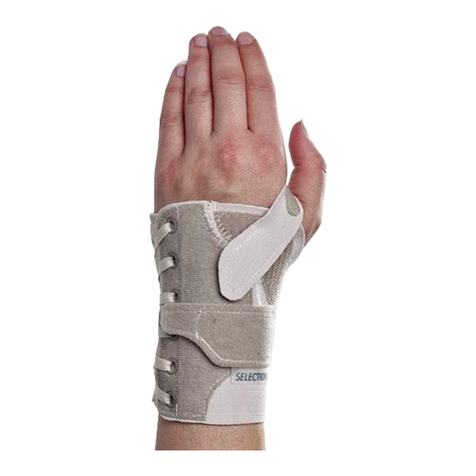
Allard
Allard SELECTION 35222 Series manual
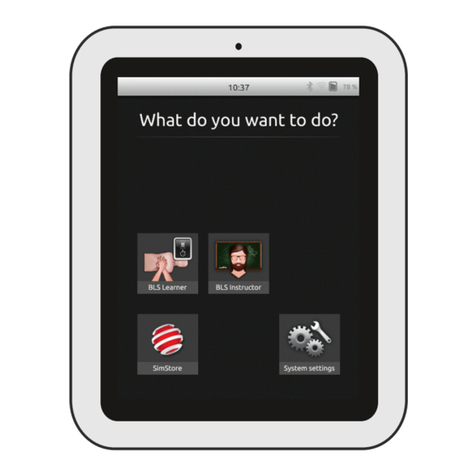
laerdal
laerdal SimPad user guide
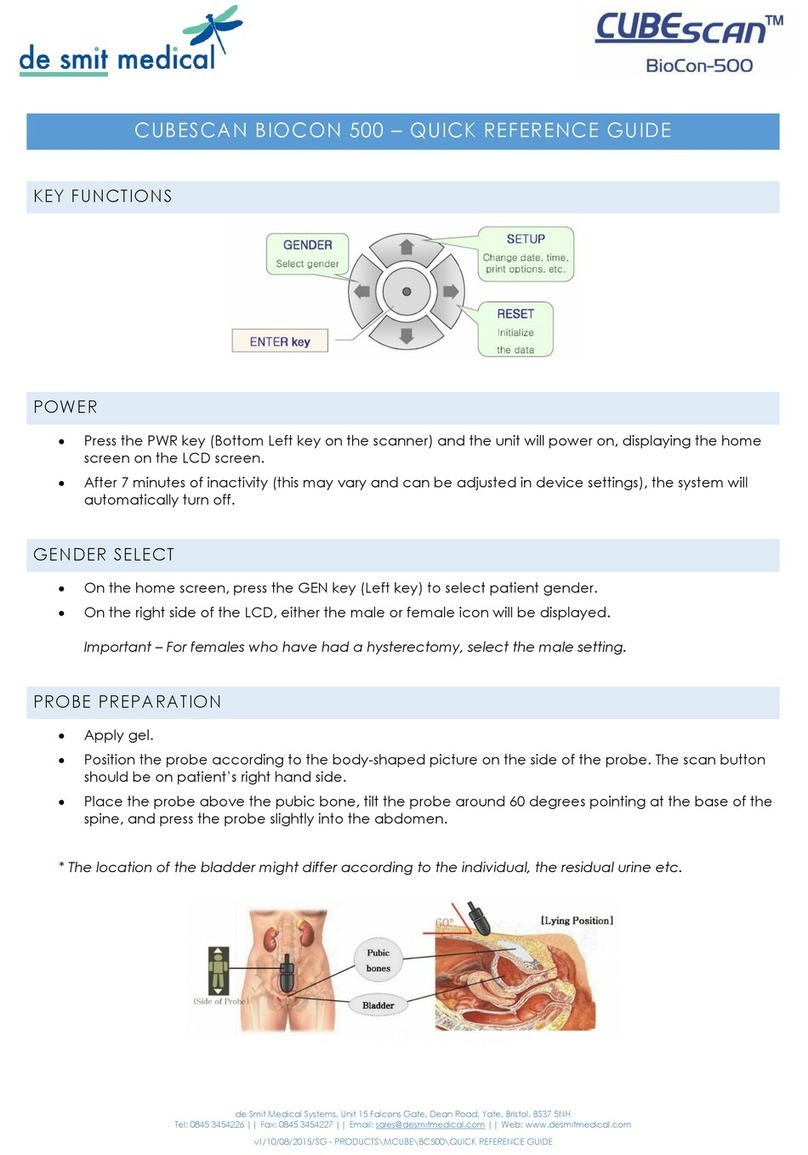
de smit medical
de smit medical CUBESCAN BioCon-500 Quick reference guide
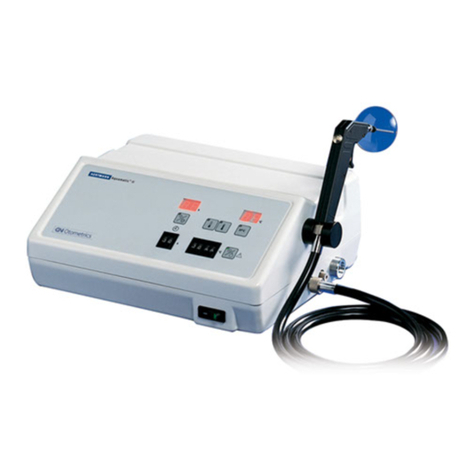
otometrics
otometrics HORTMANN Aquamatic II user guide
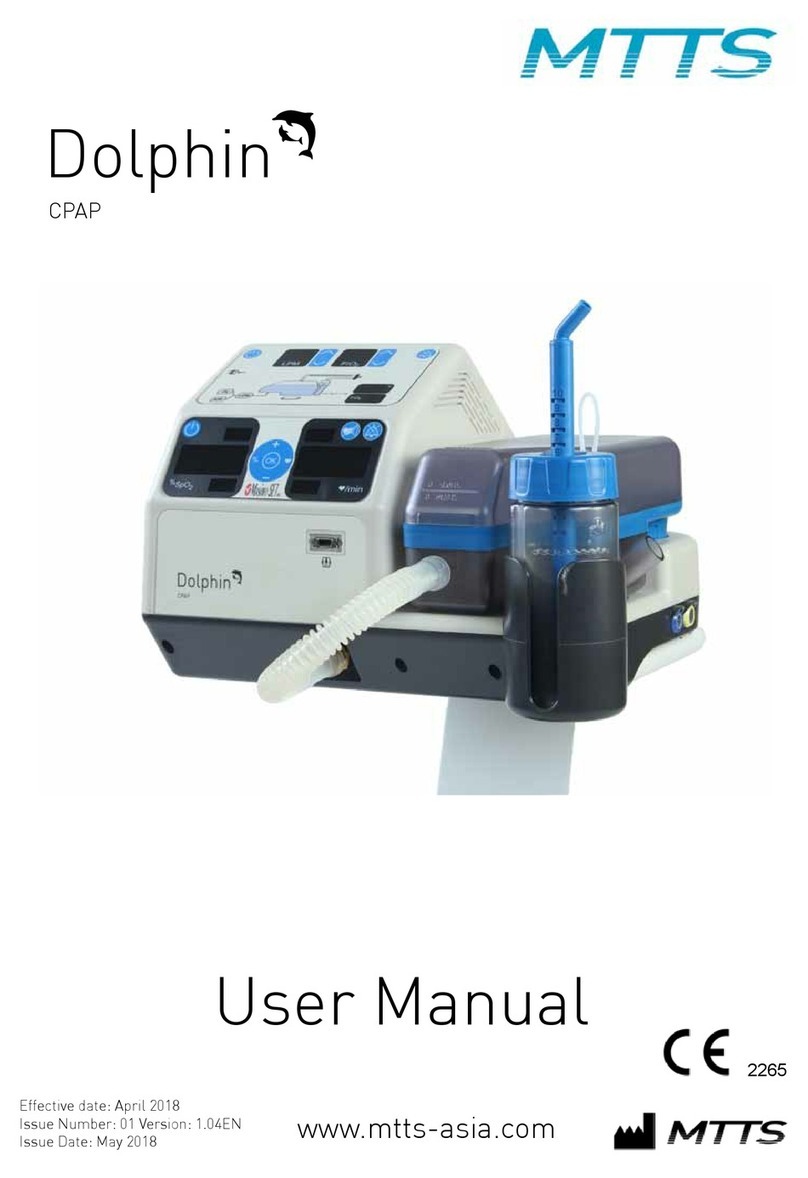
mtts
mtts Dolphin CPAP user manual
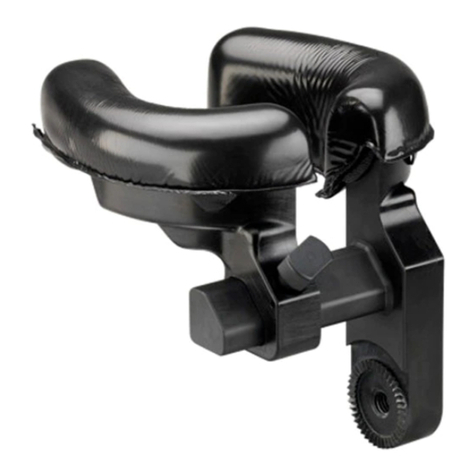
Integra
Integra MAYFIELD Adult Horseshoe Headrest A2010 instruction manual
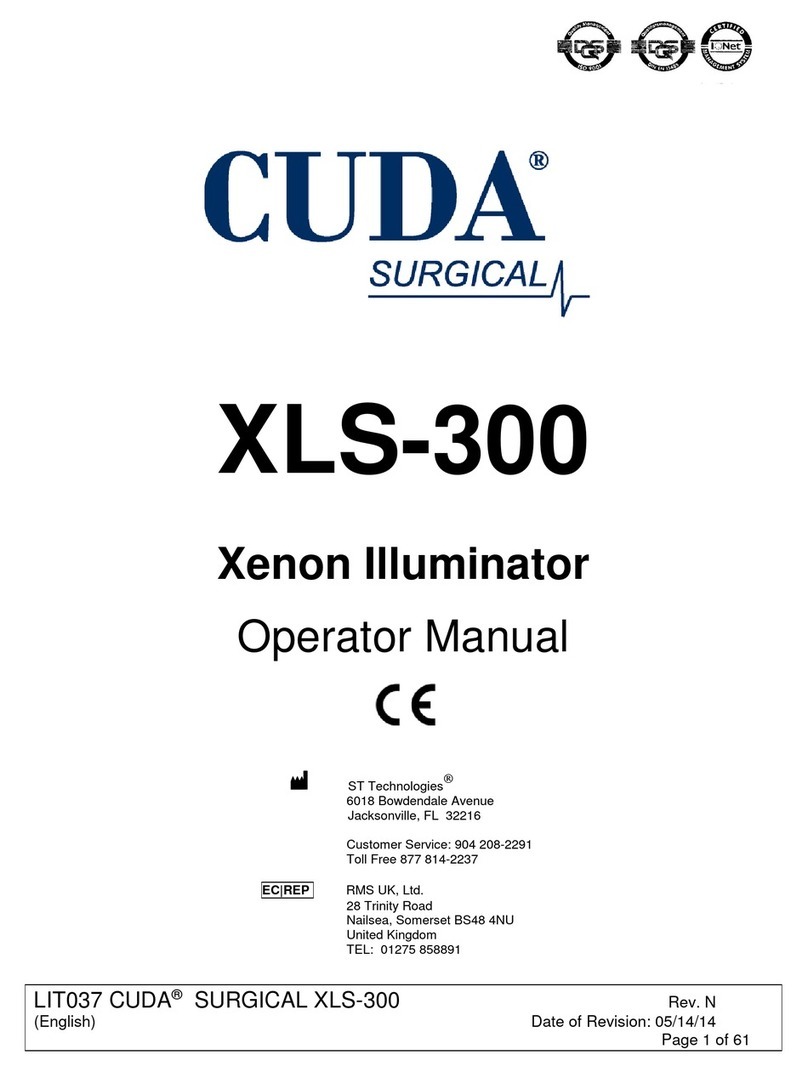
CUDA
CUDA XLS-300 Operator's manual

medi
medi circaid juxtalite ankle foot wrap inelastic compression... Instructions for use

bort medical
bort medical 103 580 quick guide
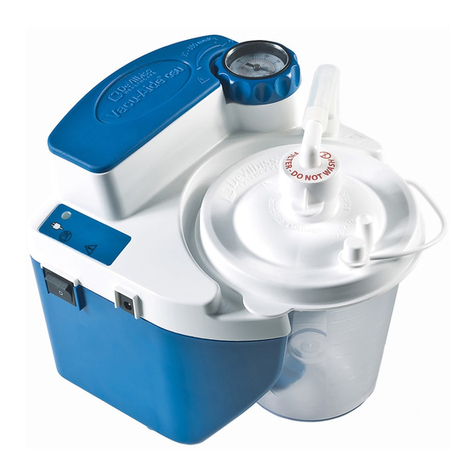
DeVilbiss Healthcare
DeVilbiss Healthcare Vacu-Aide QSU 7314 Series Instruction guide
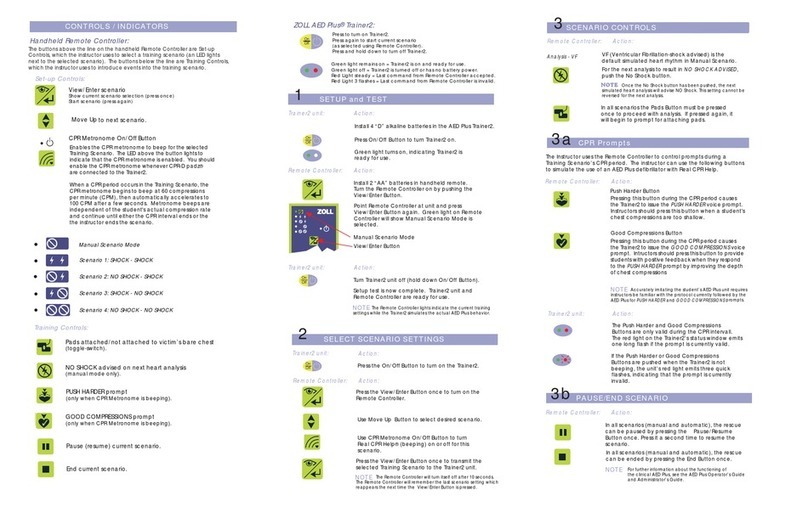
ZOLL
ZOLL AED Plus Trainer2 Operator's guide

Spencer
Spencer Portavent 170 manual

